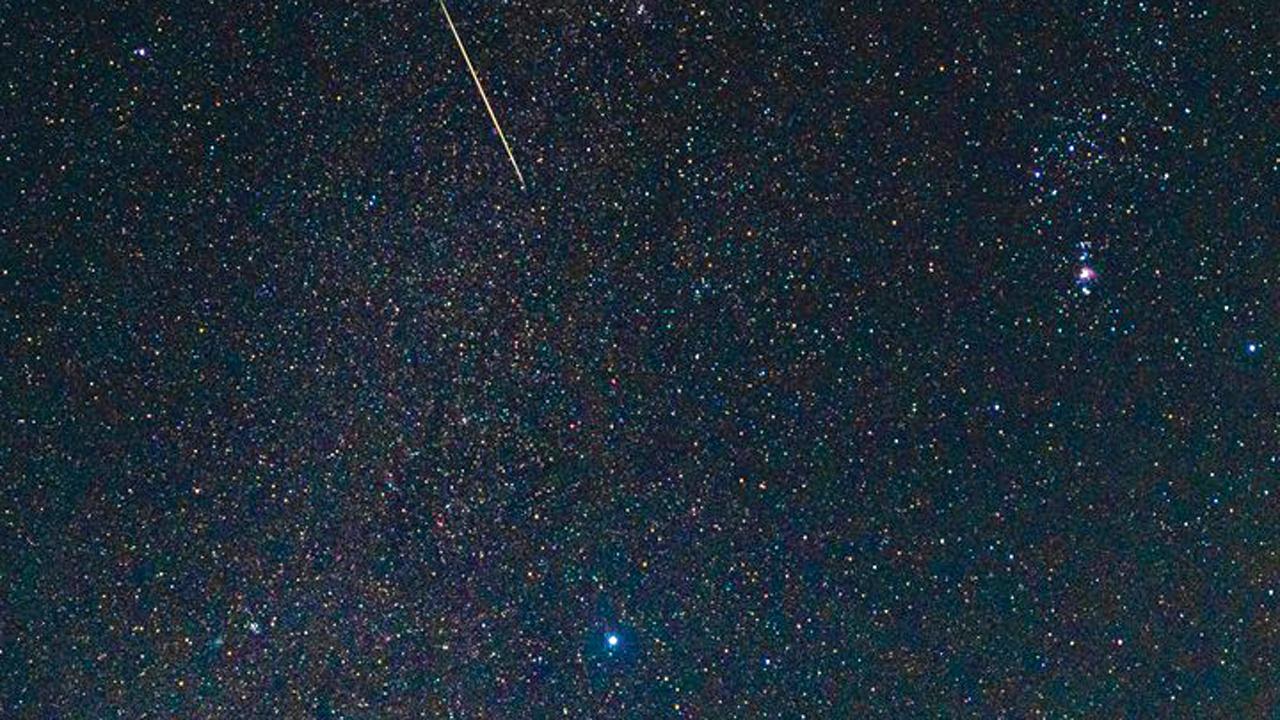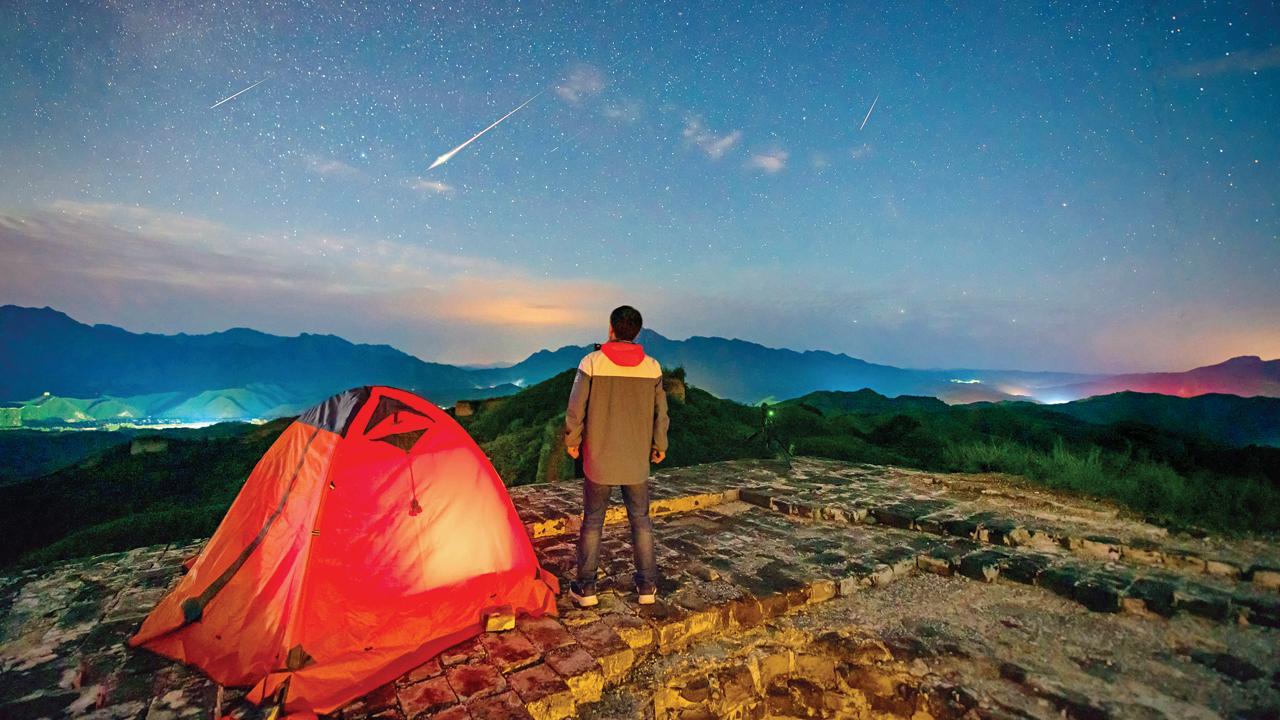The Quadrantids meteor shower will peak this evening and into the first half of tomorrow. Here’s your chance to spot this stunning celestial spectacle in Mumbai and its surrounding areas

This Quadrantid meteor shower was captured in 2011 using an A 4 second exposure and a wide-angle lens at Ladd Observatory in the USA. Pic Courtesy/Wikimedia Commons
The Quadrantids that peak in early-January are considered to be one of the best annual meteor showers. “This year, the Quadrantids — a very active meteor shower consisting of hundreds of rocks and shooting stars — will be a special sighting,” informs Sayali Sawant, a student of Astrophysics at Indian Institute of Science Education and Research, Thiruvananthapuram (IISER), adding, “Astronomers have predicted that they would no longer be visible by 2400. Most meteor showers are due to their parent comet leaving debris near Earth’s orbit around the Sun. Quadrantids also had their parent comet [C/1490 Y1], that is suspected to have been captured by Jupiter’s gravity in the past (4,000 years ago), forming meteors in the process.” Sawant adds that it has been predicted that these meteors will have a close encounter with Jupiter sometime by the year 2400, which will change the meteor’s path in such a way that Quadrantids will never be visible from Earth since that date.
Quadrantids are amongst the brighter meteor showers to occur with a high meteor rate per hour. Krushi Parekh, a volunteer at Amateur Astronomy Club, reasons why it’s a great opportunity to view this meteor shower, “Mumbaikars have only a few months of winter and summer of clear skies when they can witness such meteor showers. Chances of clear skies around monsoon months are low.”
 Arvind Paranjpye
Arvind Paranjpye
Parekh explains this phenomenon, “As the Earth orbits around the Sun, it passes through the debris left by 2003 EH1 asteroid in its five and a half years’ orbit around the Sun. The Earth’s gravity pulls these debris towards itself causing them to burn in our atmosphere, giving us a sense of fireworks in the sky. We have been calling them shooting stars since our childhood,” explains Parekh. Arvind Paranjpye, director, Nehru Planetarium, elaborates, “This event is in close proximity to the constellation of Bootes.” For those unfamiliar with planetary science, it is situated near Swati Nakshatra.
The shower is expected to peak at 6.30 pm (IST) today. Its radiant or the zone in the sky from where meteors appear to emerge, will not be above the horizon prior to 1 am. “One can still expect to see a few brighter meteors under the moonlight between 2 am to 5 am on January 5 in the sky region below Big Dipper [Saptarishi] asterism,” informs Parekh. Paranjpye recommends that during the peak of this phenomenon after midnight, one should initially locate Saptarishi. “Extend your view to about 15 degrees to the east of Saptarishi from the tail of the kite, and you will observe approximately two to three meteors per minute,” he explains, sharing that it’s possible to experience this phenomenon first-hand without the aid of a telescope. “Ensure that there is no direct light affecting your vision. Sleep until midnight, wake up, and find a comfortable spot under the night sky. You will be rewarded with the enchanting streaks of meteors,” he adds.
 To capture the Geminids meteor shower in December 2023, the photographer used the Sony A7M4 and the 20mm 1.8f lens.
To capture the Geminids meteor shower in December 2023, the photographer used the Sony A7M4 and the 20mm 1.8f lens.
The luminous streaks emanating from the eastern side and other directions all converge when traced back, forming a celestial meeting point at Swati Nakshatra.
2400
The year by which Quadrantids are predicted to disappear
 To spot the meteor shower, find a location at a slight height which is away from the city lights. Representation pic
To spot the meteor shower, find a location at a slight height which is away from the city lights. Representation pic
Where to experience it?
. Naneghat is an ideal location near Mumbai where you can set up a camp and get a good view of this phenomenon
. Yeoor hills is one option if you are looking to observe the meteor shower in Mumbai. It is better to step outside of the city for better sighting of this phenomenon. Most hill stations near Mumbai are polluted by lights and so it would be difficult to spot meteors there. Smaller villages like Dehene, Purushwadi or camping at a fort are ideal spots
Spot the shower
. Take a blanket and lay down on the ground. It takes about 30 minutes for your eyes to grow accustomed to the night sky, before you can start spotting the meteor shower
. The best time to watch this shower is on the night of January 4. Although it peaks at 6.30 pm on that date, it will be better visible between 1.30 am and 5 am (early morning of January 5)
. To spot the meteor, keep looking in the zone below Big Dipper (Saptarishi)

Information courtesy: Krushi Parekh, volunteer, Amateur Astronomy Club
 Subscribe today by clicking the link and stay updated with the latest news!" Click here!
Subscribe today by clicking the link and stay updated with the latest news!" Click here!










